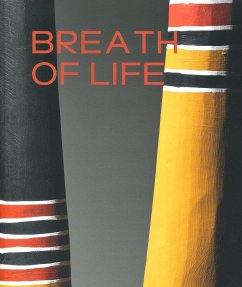“The sound of the yidaki calls everyone together in unity.” - Djalu Gurruwiwi Yidaki, more commonly known as didgeridoo, is the iconic Aboriginal instrument. Yidaki found its way to the streets of Europe and gained tremendous popularity to the point that this music instrument is almost synonymous with Aboriginal Australia. Despite this widespread attention, very little is known about yidaki. The exhibition at the Fondation Opales, and this accompanying publication sets out to acquaint a European audience with this captivating musical instrument, with the people and the unique culture who produced it and with the land where it originated. More than just an emblematic wooden instrument, yidaki is a cultural and spiritual marker. It is the whole story of a region and a people; it is also about healing. Through the work of three prominent Yolngu artists that all share the remote community of Gangan as homeland - Gunybi Ganambarr, Malaluba Gumana and Bulthirrirri Wunungmurra - several ancestrally significant places are visited and stories linked to these, such as that of the Mokuy spirits or Wititj, the Rainbow Serpent, are told. Anchored in deep cultural knowledge, their vivid and innovative work connects past and present.
Bitte wählen Sie Ihr Anliegen aus.
Rechnungen
Retourenschein anfordern
Bestellstatus
Storno

